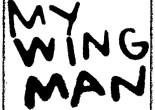Huicholes: The Last of The Peyote Guardians

Bryan Parras interviews Katira Ramirez
The Wixaritari (Huicholes), are a pre-colonial culture whose territory spans 140,000 hecters (approximately 540 square miles) between the Sierra Madre Occidental and Zacatecas mountain ranges. They Huicholes survived European disease, Spanish Conquest and Mexican societal encroachments, but now they face their biggest threat yet. Canadian mining company First Majestic Silver purchased underground mineral rights in 2025 giving them access to the Huicholes most sacred site at Real de Catorce in the state of San Luis Potosí.
The small town of Real de Catorce was founded in 1779 shortly after silver was discovered in nearby mountains but indigenous peoples have lived in the region for thousands of years. The Huicholes are direct descendants of those original inhabitants. One of their ancient traditions is to make an annual pilgrimage to this region where they participate in religious ceremony in a sacred land they call “Wirikuta”.
I recently had the opportunity to talk with Huichol Shaman, José Luis “Katira” Ramírez about this very topic and the long fight ahead as he and the Wixaritari enlighten us about the importance of ceremony and reverence for sacred sites. This all comes together in the documentary film Huicholes: The Last of the Peyote Guardians which will make its U.S. Debut at Rice Cinema, November 5th at 7:00PM. The films protagonist Katira and son Enrique Ramirez will be in attendance. Argentine film director, Hernan Vilches will also be in attendance for a Q&A after the film.
I spoke with Katira over the phone about the film.
How would you like people to identify you?
Wixaritari – In our mother tongue from where our great grand parents, where our grandparents were born, it is a real name and original name. Wixaritari [is] the name of the people, if you speak of the person, in general, Wixarika.
Tell us how you began to notice problems in the community?
So, it has been known for some time, within the 4 major indigenous communities in the area – Santa Catarina, San Sebastián, San Andrés Cohamiata and Tuxpan de Bolaños. These form the four indigenous communities and within this, we noticed territorial problems dealing with sacred sites and communal boundaries between the 4 communities as well.
How do the Wixaritaria people live in the region?
Each community has existed for millions of years since our universe began. We were there since the beginning, not recently, but since the arrival of our essence, since the arrival of the viceroys. At the arrival of the time of the viceroys, they came from the ocean at San Blas, Nayarit, they went to populate different [places] and we now have different ethnicities. There in that community has important, universal connection with the sacred places, the four cardinal points, and to the center in the place of Tatewar,“Grandfather Fire” at the mountain there [between San Andrés and San Sebastián, in Santa Catarina] and we serve as the responsible ones, the guardians.
Why is Real de Catorce important and why must the silver stay in the ground?
Yes, well, for us, our greatgrandparents, our grandparents, left there for us the formation of our universe, which we call “Llogachiban”[a university], because there are the books, magically invisible, that can’t be seen, but [are there] for the people who collect the medicine, because with their medicine they have visions and dreams through the universe.
Then, the mine, the gold is the center of the heart of humanity. If from me you take my heart, if a temple can be knocked down, well then, that is why we don’t want [Wirikuta] knocked down, we don’t want it worked on, because there will be pollution. We don’t want the little bit of water that is there to become contaminated and furthermore, the damage it would bring to the medicine, and the [toxic] dust, this would harm all the areas where there is medicine.
Is this the message you want the audience to take away?
Well, yes, this is what we want everyone to know, all the communities, the international community so that all the children and all the grandchildren can grow to defend the environment.
This film was made after a direct request from you. Do you feel that the film did your community justice and have the other Huichol communities supported the film?
Uh-huh, well, the story is really funny, so we kinda bumped into each other, I don’t know where, I can’t remember, might have been in DF, and we ran into each other and out of necessity, I spoke to him about the community, because there wasn’t enough water and if it were possible to make a documentary about the community. So then, well, he said yes– I will get to work on this, but I have no one to sponsor me on this project, it will take a while, but I will work on it.
Later we agreed to get it done and we talked to the community about the topic and people commented; Yes, they wanted to be a part of it, no, some didn’t and so on, but it will turn out to be a good thing, because that way the thing can be recognized and one can support it because many people don’t know about that corner of the world – and that’s the way the idea started.
Then in 2025 the whole issue with the mines sprang up, we confronted this and invited the director to the pilgrimage…the next year– and that’s when we started to get to know one another. I couldn’t believe this was going to stir up ideas on such an important topic, a legacy - and we can’t say that is a simple topic to cover, but it is a major documentary.
The community has responded well to the documentary and if there is an issue, if someone is not in agreement, I tell them, you think this is easy. This will be a good example, to inform our children, our grandchildren, so that they have something to follow when we are gone, so that they have a counsel, an experience for their future – this is the idea.
How special was that moment for you when the rain finally came and how did that make you feel?
Well, all the energy of the cosmos and the universe that expanded and moved and brought the rain…the scientists and experts, all of us, began making a little contribution. Thank god, now it has rained a lot.
It is important – when you think badly, then bad things happen, when you speak badly, then your parents feel this, when your parents speak badly their children feel the pain of whatever problem. Some places it doesn’t rain, in another there’s an earthquake. When you speak, your voice will be heard by god, and that is when there is change, thank God.
What is the significance of the violin and music in ceremony? When did the violin become part of the peyote ceremony?
Oh, well it came from the beginning, the arrival of the prophecy, that mythology. That essence came from far away, long ago, beyond the world. That essence is from long ago…way before the world came into existence. It came, walking, walking all of the kingdoms came this water, the one that is called “Maxakwaxi” – Whitetail Deer— who was always facing forward, and he arrives at the water’s edge in San Blas, Nayarit, which is at the arrival of all the prophecies, all the people of knowledge, and then there, Maxakwaxi takes out all of the flame with his little white tail, and plants there, different seeds, tobacco, amaranth, the 5 colors of the maize, the power of the authorities.
And there, and when he looks, there is a tree, and in the tree there are many different types of birds there, talking, and he says “this will be our magical drum, this will be our magical violin, and so, because of this, if you love a drum, if you love a violin, it will never cease to speak, it is the sound transformed, the song and chirps of birds, guacamaya (scarlet macaw), tzentzontle (mockingbird)—there are three birds that sing a lot—, and so, in that era, everything is born. The maracas, the drums, the violins, the canto (shamanic chants). Then this becomes the sacred seed, the sacred word we call it out of respect.
Then, some of us are followers of the ancestors’ footprints, their faces. We follow, we look for this – men of knowledge, of science, depending how you understand it— looking for enlightenment, looking for knowledge, looking for growth, strength for our families. We call it paritsutia the path begins until you arrive at the Cerro del Quemado (the mountain of Wirikuta), which for us is important.
Earlier, you asked me how I felt about all this, and I say, how should I feel? How should one feel when you are far from home? Courage and strength is what is required here, especially when one is away from family. Having seen what has been happening in the last few weeks – with what is happening with violence, to women, to what has happened to the 43 education students who have disappeared [in Ayotzinapa, Guerrero], it is difficult. But, I hope that the great father, the great mother, the great son, the spirit, heart of the sky and the earth gives us blessings…to our struggle, our cause, nuestra lucha.
Thank you for talking with us, for helping this and for the future of all our families, for the promise of change…long live the spirit.
by Guest Author
















Pingback: Interview with Huichol Shaman Katira Ramirez | Texas Environmental Justice Advocacy Services()